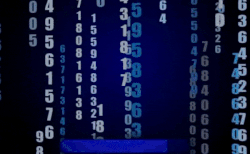 PrimeGrid screensaver | |
| Original author(s) | Rytis Slatkevičius |
|---|---|
| Initial release | June 12, 2005[1] |
| Development status | Active |
| Project goal(s) | Finding prime numbers of various types |
| Software used | PRPNet, Genefer, LLR, PFGW |
| Funding | Corporate sponsorship, crowdfunding[2][3] |
| Platform | BOINC |
| Average performance | 3,398.914 TFLOPS[4] |
| Active users | 2,330 (August 2022)[4] |
| Total users | 353,245 [4] |
| Active hosts | 11,504 (August 2022)[4] |
| Total hosts | 21,985 [4] |
| Website | www |
PrimeGrid is a volunteer computing project that searches for very large (up to world-record size) prime numbers whilst also aiming to solve long-standing mathematical conjectures. It uses the Berkeley Open Infrastructure for Network Computing (BOINC) platform. PrimeGrid offers a number of subprojects for prime-number sieving and discovery. Some of these are available through the BOINC client, others through the PRPNet client. Some of the work is manual, i.e. it requires manually starting work units and uploading results. Different subprojects may run on different operating systems, and may have executables for CPUs, GPUs, or both; while running the Lucas–Lehmer–Riesel test, CPUs with Advanced Vector Extensions and Fused Multiply-Add instruction sets will yield the fastest results for non-GPU accelerated workloads.
PrimeGrid awards badges to users in recognition of achieving certain defined levels of credit for work done. The badges have no intrinsic value but are valued by many as a sign of achievement. The issuing of badges should also benefit PrimeGrid by evening out the participation in the less popular sub projects. The easiest of the badges can often be obtained in less than a day by a single computer, whereas the most challenging badges will require far more time and computing power.
- ^ "PrimeGrid's Challenge Series - 2008 Final Standings". PrimeGrid. Archived from the original on 2011-09-26. Retrieved 2011-09-19.
- ^ "PrimeGrid's new server (again)". PrimeGrid. Archived from the original on 2017-02-08. Retrieved 2016-10-09.
- ^ "Donations to PrimeGrid". Archived from the original on 2018-07-27. Retrieved 2018-07-27.
- ^ a b c d e "PrimeGrid - Detailed Stats". BOINCstats. Archived from the original on 17 September 2017. Retrieved 21 August 2022.